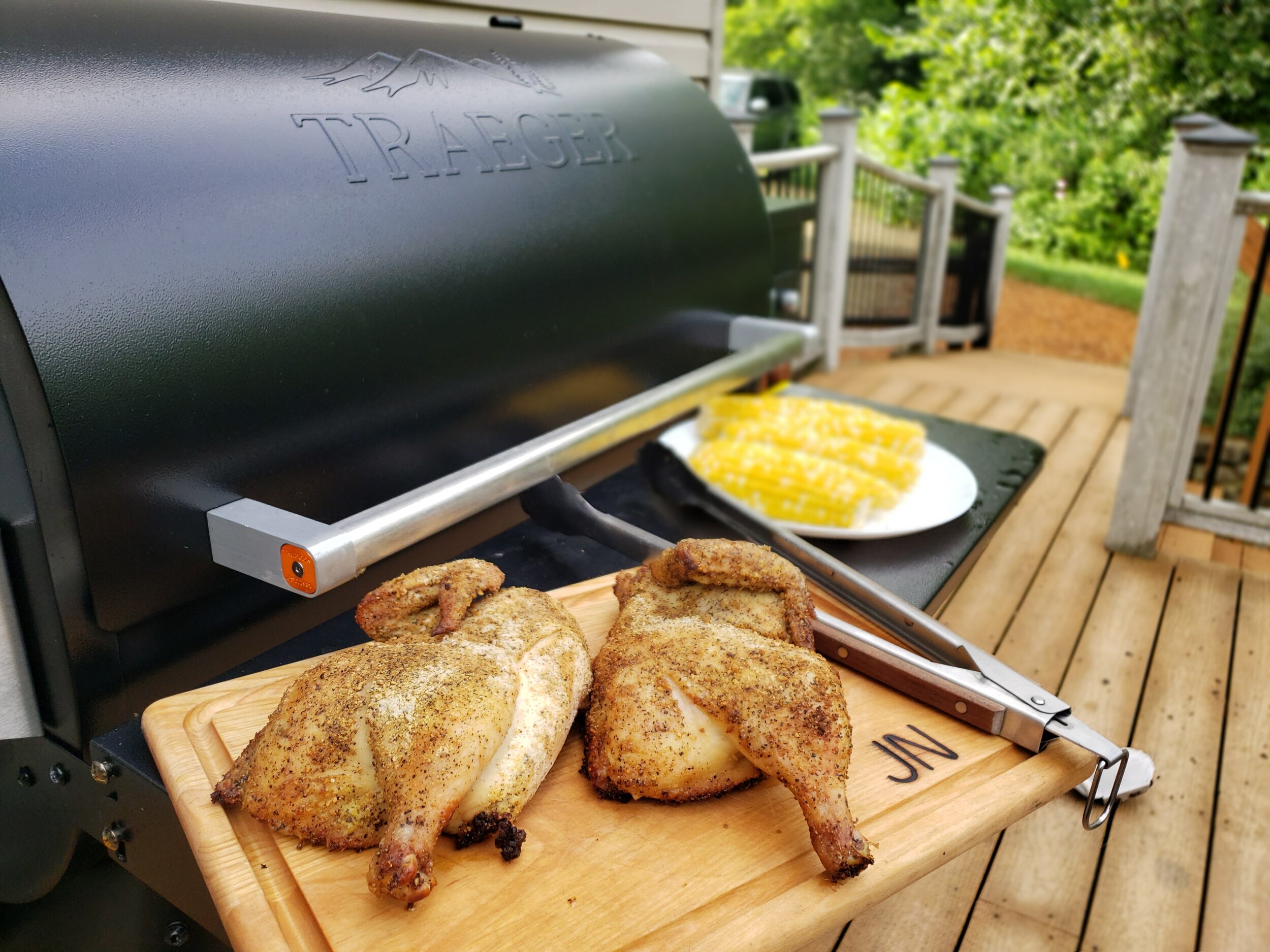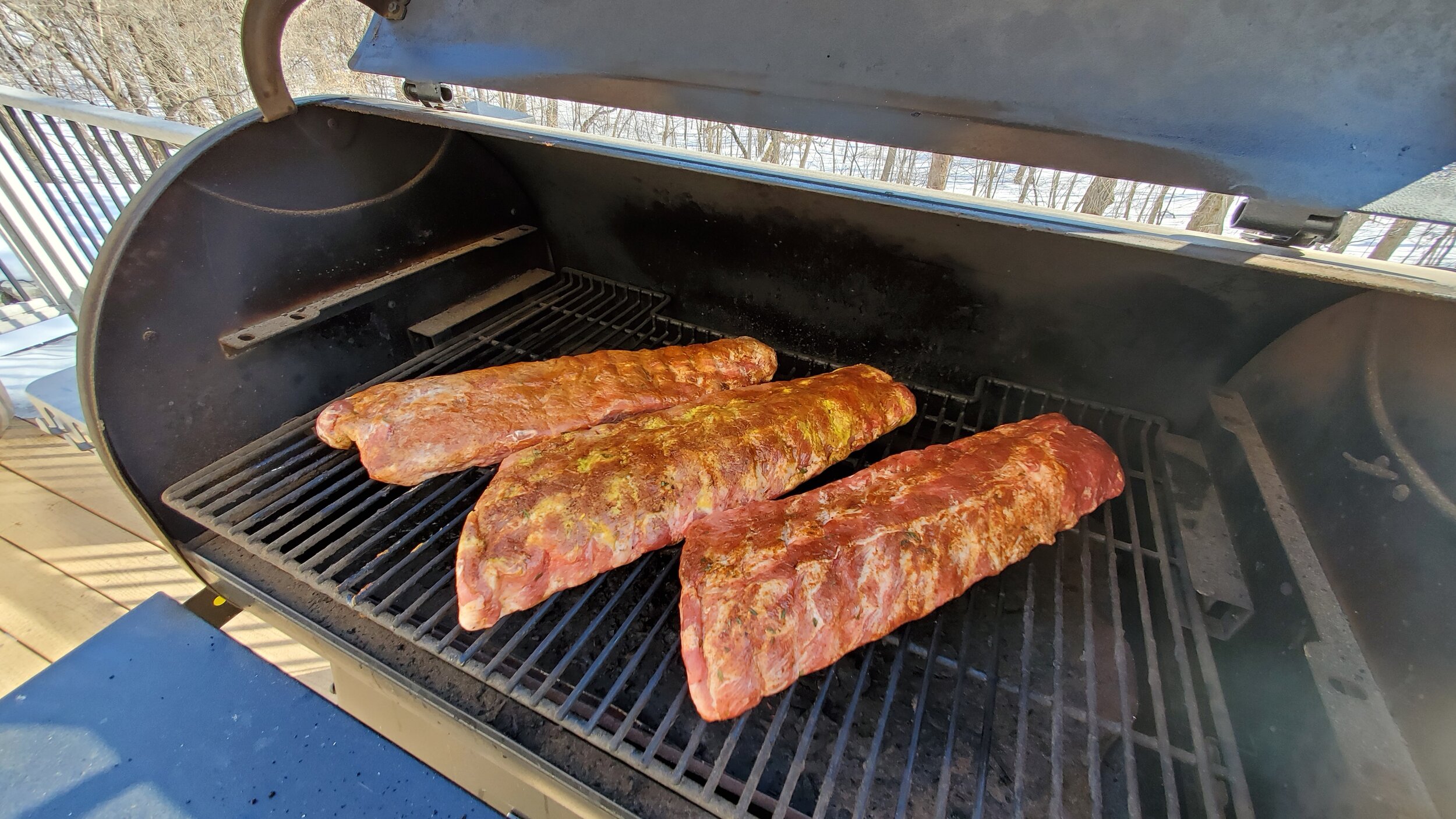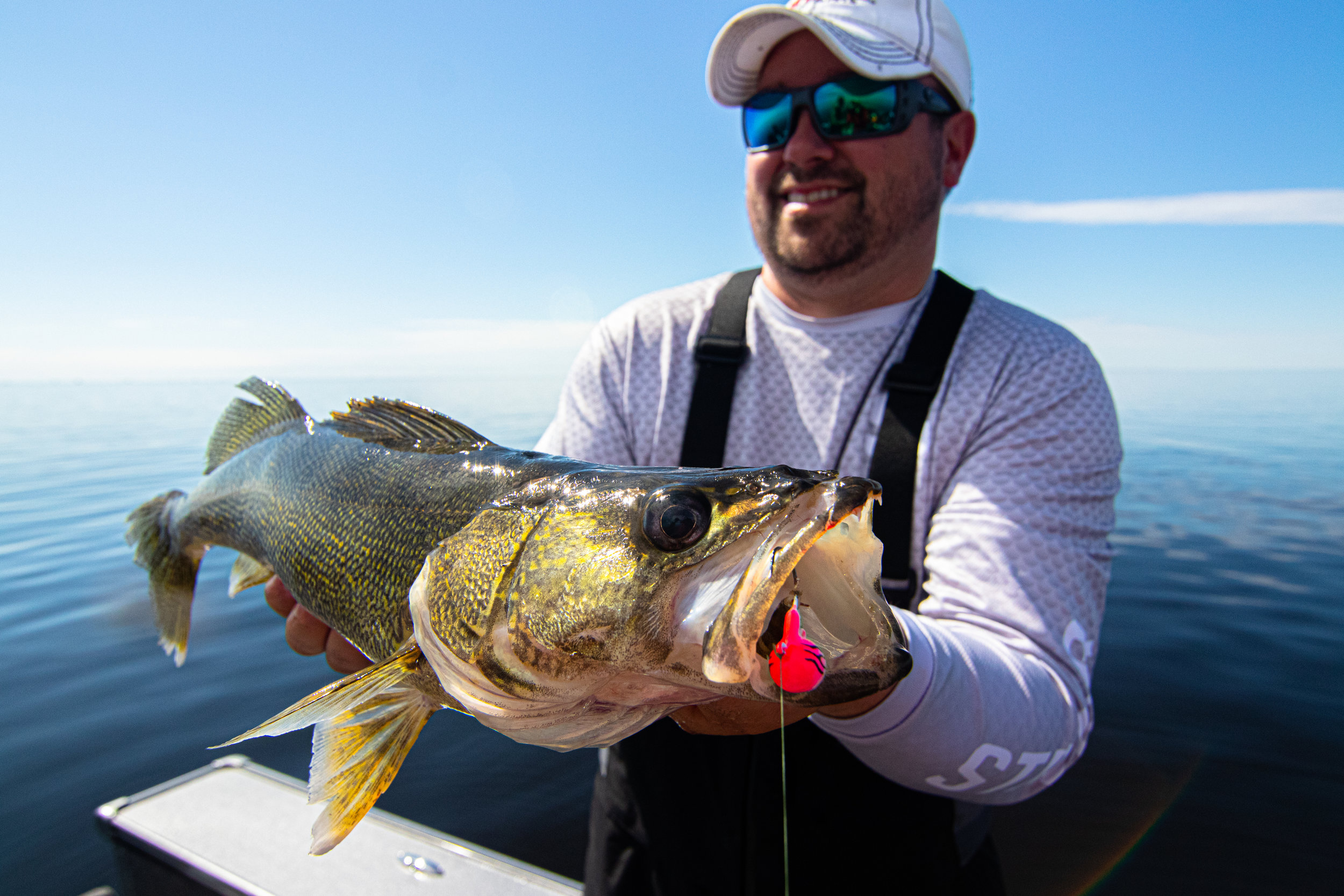From multiple cooking styles and different food types, to various temps and techniques, pellet grills are here to stay.
Pictured:
Pellet grills have gone mainstream; from something that sounded experimental only a few years ago, to a fully featured, well-seasoned backbone of the BBQ grill market. They’ve been around for decades, though their popularity is not really anything I saw coming, or even something I fully supported. I’m kind of a traditionalist when it comes to cooking, at least when I have the time to be. Yet at the same time, if it produces good food, especially with less input or fuss, I’m all about it. The same has held true for sous vide cooking or even newer techniques like reverse searing. If we can do it better, easier, faster, or all of the above, without sacrificing taste, or even improving it, why not?
Being an avid hunter and angler, I have ample opportunity and interest in all forms of cooking. From smoked turkey, to seared venison chops, and slow-roasting cedar-planked salmon, I want a grill to do it all. That comes from someone who owns or has owned a laundry list of charcoal and gas grills, vertical propane smokers, chimney-style bullet electric and charcoal smokers, and even a Kamado style cooker.
Extra room wasa big selling point for my Traeger 885 Ironwood - and it’s not even pictured with the extra rack that would hold a few more racks of ribs.
I’ve always been in search of versatility in terms of techniques and temperatures, no matter the fuel source, and no matter what I’ve tried, it seems like most versions of grills tend to do one or two things quite well, while being woefully inadequate in other areas. For example, I really fell in love with a cheapie vertical cabinet-style smoker I had a few years ago. It was propane, had tons of control, and it produced some really great results. Ultimately, it lasted only two seasons before rusting out at the bottom, and could not be used for anything other than smoking really.
Surely a Kamado style cooker would produce better results, so I dropped nearly $2k for the biggest and baddest, complete with a wooden roller cabinet to support its massive weight. I treated that wood with the most expensive stain and poly combination I could find, covered it religiously, and still found a way to rot out the cabinet, and grow fuzz on the inside of the grill itself. If it rains where you live, or worse, snows, then gets hot in the summer, a Kamado style grill might not be for you. It seared well, smoked fairly well, and did fine in terms of roasting, but without a temp/fan controller, really required some babying. Building and maintaining fires in them was a laborious process, and not to mention messy. I’m all for that style of cooking, when I have the time, but woefully disdain it when I do not.
Fish can be a tough grill chore if heating isn’t consistent or runs too hot.
It was about that time, I hired someone to build a new table for my Kamado, and got myself a pellet grill – the Traeger Ironwood 885. Again, with versatility in mind, I was interested in the size, multiple racks, temperature range, super-smoke mode, and especially, the ease of use. I’ve got a gas grill too (the deck is getting full), and see my Traeger in a similar light. Both are easy to use, require similar pre-heat, and are supplied by a readily available fuel source. Propane is easier to find, but I’ve got Traeger pellets at the local hardware store, big boxes, and outdoors stores too, so it’s a push for where I live.
The similarities stop there, and I’ve grown to really love my pellet grill. I get a solid “smoky” flavor and low temps when I want it, searing and high temps when I need it, and everything in between when I’m cooking chicken, fish, vegetables, and a host of other items, like desserts. I can choose from a variety of smoke flavors, simply by adding different pellets, and I can perform more complex cooks, more easily. For example, if I want to slow smoke ribs, then wrap and crank the heat to push the cook along, then unwrap and sauce at a slightly lower temp, I can do all of the above with the push of a few buttons.
The Traeger App allows you to search a recipe and enact it on your grill - complete with controls for heat, timing, and meat probe alerts. Best of all, you can monitor your fuel and switch it to “keep warm” so the food fits your schedule.
Better yet, I can do all of that and more from my phone. These days, I visit the grill to get it going, and come back to it when finished. Occasionally, I’ll check it out mid-cook for a spray, slather, or sauce, but the onboard temp probe gets put in the meat at the start, and I monitor internal temp from there. Recipe guides from the control app can be sent straight to the grill, complete with instructions, timing regulation, and alerts on my phone. While I enjoy some of the tinkering and going off on my own, I realize that most people do not. They want repeatable results and max ease of use. I can’t think of an easier way to grill.
There’s a few drawbacks, like the occasional need to remove ash via shop vac, and maybe some general grate scraping and foil shield replacing. All of which is as easy as the gas grill maintenance and way easier than any wood or charcoal grill I’ve owned. Ultra greasy grill-offs should be monitored, as I had one flare up when I didn’t keep the grease drain free from obstruction. My fault on that one, but lesson learned, and the grill was smart enough to shut itself down after it detected the fire. Still, I’ve had grease fires on gas grills and wood-fired grills too, so it’s been pretty rock-solid. I’ve gone through a few bags of pellets, but fuel is fuel – grill, smoke, or roast a lot of food, and you’re going to go through it. It’s slightly more expensive to fuel than propane, but with a load of flavor, so again, I’m not against paying a bit more for a quality result.
In App controls are reflected on the base unit, so you can monitor from afar or up close.
For that reason and others above, it’s become my go-to for about everything I cook, and I continue to find new ways to incorporate it into everyday cooking. Grilling used to be for weekends, but I’ve done some really great mid-week meals that don’t heat up the house and are a blast to do. The more I use it, the better I learn to make use of it for the varied styles and recipes it excels at. For just about every task, including pizza-making, it does better than the other grills in my stable.
Over the long-haul, I expect it to phase out my other grills for all but a very few specialized tasks. Even then, knowing what I know now, it would definitely be the one grill to replace them all had I only room for one. I’m excited to own it for years to come, and look forward to sharing more I learn along the way.









